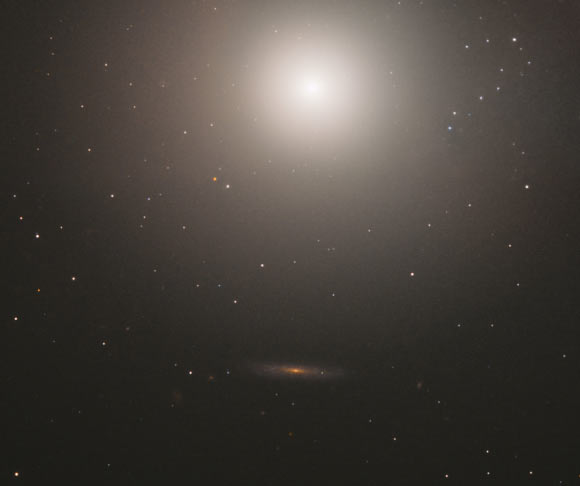The NASA/ESA Hubble Space Telescope has taken a picture of the massive galaxy Messier 89, which is found in the constellation of Virgo.

This image of the elliptical galaxy Messier 89 is a composite of separate exposures acquired by Hubble’s Wide Field and Planetary Camera 2 (WFPC2). Two filters were used to sample various wavelengths. The color results from assigning different hues to each monochromatic image associated with an individual filter. Image credit: NASA / ESA / Hubble / S. Faber et al.
Messier 89 is an elliptical galaxy located approximately 55 million light-years away from us.
It was discovered by French astronomer Charles Messier on March 18, 1781.
Also known as M89, NGC 4552, LEDA 41968 and UGC 7760, this galaxy appears to be perfectly spherical.
This is unusual for elliptical galaxies, which tend to be elongated ellipsoids.
Its apparently spherical nature could, however, be a trick of perspective, and be caused by its orientation relative to the Earth.
Messier 89 contains approximately 100 billion stars and over 2,000 globular clusters, and belongs to the Virgo Cluster of galaxies.
The galaxy is slightly smaller than our own Milky Way Galaxy, but has a few interesting features that stretch far out into the surrounding space.
One structure of gas and dust extends up to 150,000 light-years out from the galaxy’s center, which is known to house a supermassive black hole.
Jets of heated particles reach out to 100,000 light-years from the galaxy, suggesting that Messier 89 may have once been far more active than it is now.
It is also surrounded by an extensive system of shells and plumes, which may have been caused by past mergers with smaller galaxies — and implies that Messier 89 as we know it may have formed in the relatively recent past.







